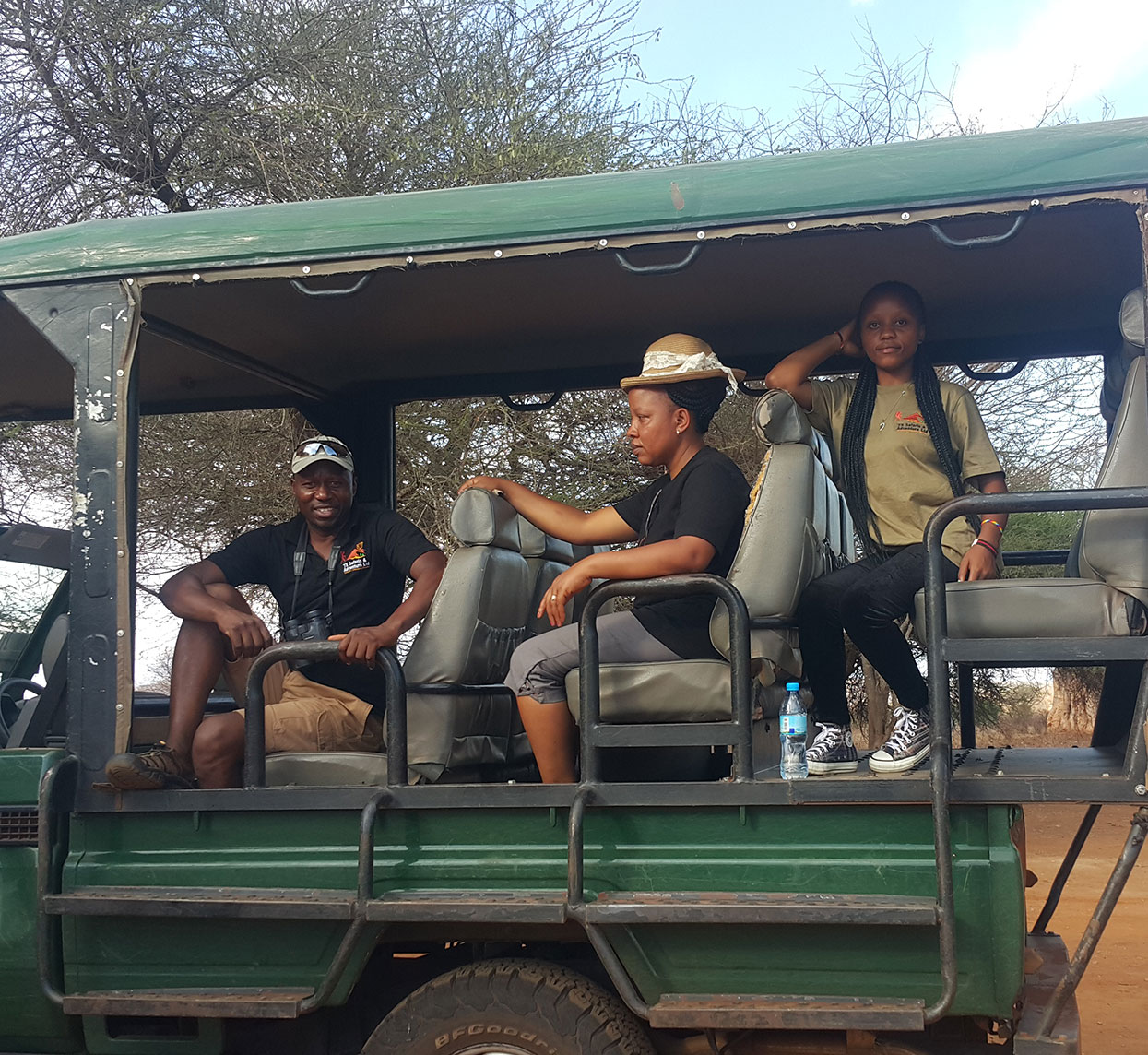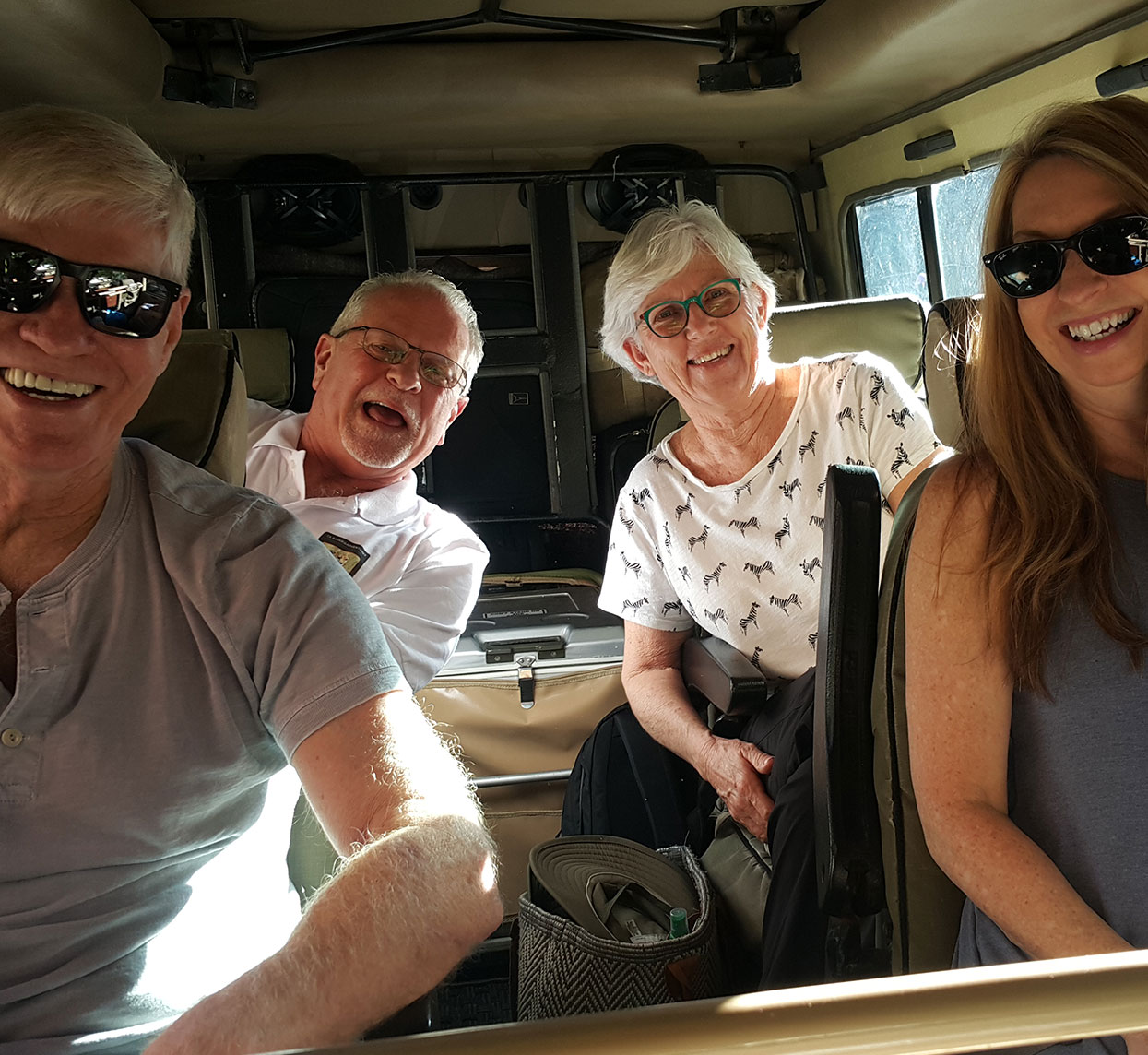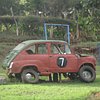Tanzania Travel Tips for a Safari with TX SAFARIS & ADVENTURES
Tanzania, truly, is a safari destination without peer.
The statistics peak for themselves a paralleled – one quarter of its surface area has been set aside for conservation purposes, with the World-renowned Serengeti National Park and incomprehensibly vast Selous Game Reserve heading a rich mosaic of protected areas that collectively harbour an estimated 29 percent of Africa’s large mammal population.
And yet there is more to Tanzania that just safari, There is Mount Kilimanjaro a Meru respectively the highest and fifth highest peak on the continent. And Lake Victoria, Tanganyika and Nyasa the three largest fresh water bodies in Africa. Then of Corse, there is the magical spice island of Zanzibar, the highlight of a vast Indian Ocean coastline studded with postcard-perfect beaches, stunning offshore diving sites, and mysterious runs.
It doesn’t stop there. Rising from the sandy shore of Lake Tanganyika, the forested Gombe Stream and Mahale Mountains Nationals Parks view with each other as the best place in the World to track wild Chimpanzees. Closer to the coast, the isolated massifs of the under publicised Eastern Arc Mountains have been dubbed the African Galapagos in recognition of their wealth of endemic plants and Animals. And Tanzania’s daunting natural variety is mirrored by a cultural diversity embracing 120 distinct tribes from the iconic Maasai pastoralists of that Rift Valley to the Arab – influenced Swahili of the coast, to the Hazabe hunters gathers of the Lake Eyasi.
So, how to define the experience offered by a country with highlights as unique and diverse as Kilimanjaro, Zanzibar, Lake Tanganyika, Serengeti and Selous? An experience that might for some entail long days hiking in sub- zero condition on the upper slops of Africa’s most alluring peas; for other a once-in-a life time safari followed by a sojourn on an idyllic Indian Ocean beach, for other still the thrill of eyeballing habituated Chimpanzee’s, or diving in the spectacular offshore reefs around Mafia, or backpacking through the time warped ports and crumbling ruins of the half- forgotten south coast?
Well the one thing that does bind Tanzania’s diverse attractions is of Corse it people, who take justifiable pride in their deeply ingrained national mood of tolerance and peacefulness. Indeed, Tanzania for all its ethnic diversity, is practically unique in Africa in having navigated a succession of modern political hurdles –the transformation from colonial dependency to independent nation from socialist state to free market economy, from mono-parties to full-fledged democracy – without ever experiencing sustained civil or ethnic unrest.
Tanzania has also over thepast20 years, emerged from comparative obscurity to stand as one of the Africa most dynamic and popular travel destinations: a land whose staggering natural variety is complemented by the innate hospitality of the people who live there. How it define the Tanzania experience? Surprisingly easy, really. It can be encapsulated in a dozen time daily, no matter where they travel in Tanzania, or how they go about it: the smiling heartfelt Swahili greeting of KARIBU- WELCOME!
Getting To Tanzania
Tanzania has got two international airports which are Kilimanjaro International Airport (JRO) and at Dar es Salaam. Dar es Salaam Airport (DAR) is further south and is generally the landing point for business visitors or those wishing to explore the southern National Parks and Zanzibar.
The Kilimanjaro International Airport (JRO) is placed very handily for Arusha which makes it a better landing site for visitors on Safari to the Serengeti, Ngoro Ngoro Crater or other Northern National Parks. For Flying into Tanzania direct flights are generally easier and cheaper into Dar, however this is often offset by the cost because you’ll have to take a local flight to Arusha, which at peak season can be expensive.
To fly straight into Arusha you can generally get flights with KLM or Qatar Airways, Ethiopian Airways though these premium airlines are often quite expensive compared to the other flight providers:
Kenya Airways often provide cheaper flights, though you will generally end up with a stopover in Nairobi. If this is the case you will need to book a hotel in the city for your overnight as there is no accommodation at the airport – you will also need to check with your local travel advice office in case Nairobi has any security issues for foreign visitors.
Ethiopian Airlines is another good choice for flying into Northern Tanzania. Your flight will stop in Addis Ababa, but the airport there is relatively modern and an acceptable place to wait for a few hours. Visitors from Europe could also consider Condor Fudgiest, who fly from Frankfurt. This midrange airline has good standards and while they are not the cheapest, they are very reasonable.
Visas for most travellers are available at the border or the airport after landing, however please be aware that your airline may refuse to transport you if you have not purchased a visa and do not have a return flight – this is especially important for those who are traveling to Tanzania and returning only after touring other destinations, or via a different carrier.
An additional requirement for entry into Tanzania is an up to date certificate of immunisation against Yellow Fever. While the disease is almost eradicated in the country, the Tanzanian government is still doing their utmost to stopping its spread, hence this requirement.
Visa & Documents
It is possible to get your visa at the border going into Tanzania or at the Kilimanjaro or Dar es Salaam airports when you arrive. Allow extra time for this process. You will need US$100 cash if you are a U.S. citizen or US$50 cash for all other nationals.
Alternatively, you can get your visa ahead of time. U.S. Citizens get the visa application from the U.S. Tanzania Embassy website or call them in Washington D.C. at 202-939-6125, and ask for a visa application. Other nationalities check Tanzanian Embassies around the world for the nearest embassy.
Each traveler will need to send
- Completed visa application
- Valid passport (at least 6 months before expiration)
- Two passport-size photos
- $50 ($100 for U.S. passports)
- Prepaid return envelope addressed to yourself (multiple applications can be sent together)
- Proof of travel plans (our Reservation Confirmation is sufficient)
Payment can be made by money order, credit card ($2 processing fee), personal check (include a copy of your driver’s license and add a $2 processing fee).
Allow 30 days for processing. You might want to consider sending it certified mail or Federal Express both directions to ensure the safety of your passport.
Passport
You must have a valid Passport with no less than six months from expiry left on the passport, from the date of entry to Tanzania.
Can we get our visa on arrival? Yes, you can get a visa on arrival at the airport or at any entry point into Tanzania such as at Julius K. Nyerere International Airport (JNIA), Kilimanjaro International Airport (KIA), Zanzibar International Airport (ZIA), Namanga, Sirari and Horohoro (Tanzania - Kenya Border Post to the North), Tunduma (Tanzania - Malawi Border post to the South), Taveta and Holili (Tanzania - Kenya Border post to the North East), Kigoma port and other gazetted entry points
When To Travel
If your main objective is to see large quantities of animals, then the easiest time of year to do this is between June and October - Tanzania's dry season. This is particularly the case in Ruaha and Selous in Southern Tanzania, Katavi in Western Tanzania as well as Mahale Mountains on Lake Tanganyika, although in June and early July the chimps can still be high up in the mountains.
The Ngorongoro Crater Highlands can still be full of flowers in June and July but be prepared for changeable temperatures, it being often cold with low cloud through these months. Tarangire National Park in Northern Tanzania, which acts as a dry season refuge for wildlife from the entire Maasai Steppe is at its best for game between late July to late October, but is always good for Elephant and in the green season (December to May) has tremendous birdlife.
Location
- Jan
- Feb
- Mar
- Apr
- May
- Jun
- Jul
- Aug
- Sep
- Oct
- Nov
- Dec
NORTH:
- Arusha NP
- Lake Manyara
- Ngorongoro
- Serengeti
- Tarangire
Weather: Price: Popularity:
- Periodic Rains
- Costs are elevated
- Busy. Many lodges book full
Rainy Season*
- Costs are reduced
- Slow. Few travelers’
Rains End Medium costs
More busy
Dry Season
- Costs are elevated
- Busy. Many lodges book full
Dry Season
- Medium costs
- Not as busy but still busy
Short Rains*
- Medium costs
- Slower
Rains end
- Peak holiday
- Full holiday
SOUTH:
- Mikumi
- Ruaha
- Selous Udzungwa
Weather: Price: Popularity:
Rainy Season
- Costs are reduced at selected locations
- Some camps closed. Fewer travellers’
- Rains end Regular costs Busier
Dry Season
- High Season. Costs are elevated/regular (the South has higher priced accommodations than the North)
- Busy. Many lodges book full.
WEST:
- Gombe
- Katavi
- Mahale
Weather: Price: Popularity:
- Short Dry Season
- Costs are reduced
- Second best time to visit
Long Rainy Season*
- Costs are reduced
- Some camps closed
Dry Season
- Costs are elevated (the West has higher priced accommodations than the North)
- Peak Season. Most recommended time to visit
Short Rains*
- Cost reduced
- Fewer travellers’
Rain ends Cost reduced Fewer travel
Health & Vaccinations
Food and waterborne diseases are the number one cause of illness in travellers’. Travellers’ diarrhoea can be caused by viruses, bacteria, or parasites, which are found throughout the region and can contaminate food or water. Infections may cause diarrhoea and vomiting (E. coli, Salmonella, cholera, and parasites), fever (typhoid fever and toxoplasmosis), or liver damage (hepatitis). Make sure your food and drinking water are safe.
Malaria is a preventable infection that can be fatal if left untreated. Prevent infection by taking prescription antimalarial drugs and protecting yourself against mosquito bites (see below). Travellers to East Africa should take one of the following antimalarial drugs: mefloquine, doxycycline, or Malarone(tm). Your risk of malaria may be high in these countries, including cities.
The CDC recommends the following vaccines (as appropriate for age). See your doctor at least 4–6 weeks before your trip to allow time for shots to take effect.
Hepatitis A or immune globulin (IG).
Hepatitis B, if you might be exposed to blood (for example, healthcare workers), have sexual contact with the local population, stay longer than 6 months, or be exposed through medical treatment.
Rabies, if you might be exposed to wild or domestic animals through your work or recreation.
Typhoid, particularly if you are visiting developing countries in this region.
Yellow fever*, if you travel anywhere outside urban areas
As needed, booster doses for tetanus diphtheria, measles, and a onetime dose of polio vaccine for adults. Hepatitis B vaccine is now recommended for all infants and for children ages 11–12 years who did not receive the series as infants.
*YELLOW FEVER - is required for ALL persons from yellow fever endemic countries/regions. All individuals in transit for 12 hours or more and/or who leave the immediate airport vicinity in a yellow fever endemic area are required to get vaccinated. All individuals from yellow fever endemic regions traveling by way of air, marine and land are required to get vaccinated. The Ministry of Health and Social Welfare of the United Republic of Tanzania has reinstalled HEALTH SURVEILLANCE DESKS in all borders, ports and international airports. PLEASE CARRY YOUR HEALTH CERTIFICATES WITH YOU WHEN ENTERING TANZANIA.
To avoid getting sick...
Don’t eat food purchased from street vendors.
Don’t drink beverages with ice.
Don’t eat dairy products unless you know they have been pasteurized.
Don’t share needles with anyone.
Don’t handle animals (especially monkeys, dogs, and cats), to avoid bites and serious diseases (including rabies and plague).
Don’t swim in fresh water, including Lake Malawi. Salt water is usually safer.
What you need to bring with you…
Long-sleeved shirts and long pants to wear while outside whenever possible, to prevent illnesses carried by insects (e.g., malaria, dengue, filariasis, leishmaniasis, and onchocerciasis).
Insect repellent containing DEET (diethylmethyltoluamide), in 30%–35% strength for adults and 6%–10% for children.
Over-the-counter antidiarrheal medicine to take if you have diarrhoea.
Iodine tablets and water filters to purify water if bottled water is not available.
Sunblock, sunglasses, hat.
Prescription medications: make sure you have enough to last during your trip, as well as a copy of the prescription(s}
Travel Insurance
There are five key facts concerning Africa travel insurance for any safari trip that it's very important for you to know about before you go because if something does go wrong you will be much better prepared to handle the situation. Considering the risks, be prepared with a good comprehensive insurance cover, having comprehensive insurance will ease any concerns or worries that you may have.
When to get Travel Insurance
It's best to buy travel insurance within seven days of paying the deposit on your trip.
This way you can get insured for your trip deposit and financial default by airlines and safari operators, as well as pre-existing medical conditions. Purchasing travel insurance when you book your trip covers you in case you get sick or injured before the departure date, or if one of the companies you are planning to travel with folds or defaults.
Why Get Travel Insurance?
Unexpected Injuries - in case you get hurt or sick along the way
Comprehensive insurance will cover anything from minor injuries and the flu to more serious accidents that may require time in hospital. In the case of serious injuries an early flight back home may even be required, which is when you really cannot afford to be without comprehensive cover.
When it comes to accidents that might happen during adventure activities, the expenses can be even higher. These expenses may be higher due to the nature of the injuries sustained, or because of the remote areas adventure activities typically take place in. It is worth checking that your insurance policy covers all of the outdoor and adventure activities you are planning to do on your safari.
The risk of more expensive medical and emergency evacuation costs is especially relevant when travelling in Africa, where you often find yourself long distances away from proper medical facilities. Medical evacuations often require jet flights with on-board doctors - all of which can run into thousands of dollars in expenses.
What To Pack
What to carry or bring when visiting Tanzania or East Africa should be dictated by the activities you plan to undertake. Both temperatures and climate vary drastically from region to region and even throughout a single day.
This should be kept in mind when packing for a visit. Travellers should come prepared for hot, cold, wet and dusty conditions as well. Packing for a trip to East Africa requires some careful thought and consideration.
Baggage.
For travellers extensively travelling throughout the country or to diverse destinations it’s recommended to bring suitable luggage. Suitcases and bags should be able to withstand plenty of handling and dusty conditions. Soft-sided luggage or duffels are preferable to hard luggage for storage on safari vehicles and on aircraft used within East Africa. Large suitcases of dimensions greater than 24" x 17"x 7" are impossible to store in vehicles and on aircraft and should not be used. (Baggage and personal effects are at owner's risk throughout the tour and baggage insurance is strongly recommended). Please avoid hard sided suitcases. A backpack or a duffel bag is advisable for those planning to travel by public transport and also for trekkers. It’s also ideal for carrying cameras, travel documents and basic personal everyday items.
Clothing and miscellaneous items.
What to wear should be paid equal consideration before you travel. Light, neutral-coloured clothing is generally advised. Bright colours aren’t recommended on game drives and dark coloured clothing, particularly dark blues and black, tends to attract the diurnal (active during the day) tsetse flies more than light colours. It will get warm (or even hot!) during the day (low 30 C or high 80s F) and depending on time of year or your location, evenings can get downright chilly.
Safari dress code is casual and comfortable and modest. You may wish to bring something slightly nicer for dinners at the lodge but it should still be light weight and easy to pack. For walking safaris or game viewing on foot clothing should be of neutral colour, and white, bright or vividly patterned clothing should be avoided. Strong footwear is advisable if you are planning to do any walking. Travellers doing trekking expeditions can visit our Mountain Trekking page for more details on what to carry. Remember that the tropical/Equatorial sun is strong and burns quickly. Wide brimmed hats are preferable to baseball caps for sun protection. Both sunglasses and a good quality sunscreen should be used. A good quality insect repellent is worth bringing but should be available to buy in major towns.
Electronics
East Africa uses the United Kingdom three pronged plug and 220V. Most chargers have converters so you will only need an adapter if you are travelling from a country that does not use the UK plug. It is not common for hotels but camps usually turn off the electricity during the day as most of them are using generators and it’s advisable to charge your batteries at nights.
For cell/mobile phones frequency, all public operators use GSM 900/1800 MHz Many phones are quad band, which covers all the main frequencies and will work in East Africa. There is good reception in most of the towns and at some of the hotels. Your driver Guide will also be able to tell you where you can get good reception.
Safaris offer an unparalleled opportunity for scenic and wildlife photography and cameras are strongly recommended. Most animal activity occurs during crepuscular hours (dusk and dawn) which provide excellent photography lighting. You may witness a kill or see a lioness introducing her cubs to the pride for the first time and you’ll probably want to have a camera handy for this breath-taking moment. Don’t forget to bring your battery charger or spare batteries and adapter for all non UK plugs.
What To Pack
What to carry or bring when visiting Tanzania or East Africa should be dictated by the activities you plan to undertake. Both temperatures and climate vary drastically from region to region and even throughout a single day.
This should be kept in mind when packing for a visit. Travellers should come prepared for hot, cold, wet and dusty conditions as well. Packing for a trip to East Africa requires some careful thought and consideration.
Baggage
For travellers extensively travelling throughout the country or to diverse destinations it’s recommended to bring suitable luggage. Suitcases and bags should be able to withstand plenty of handling and dusty conditions. Soft-sided luggage or duffels are preferable to hard luggage for storage on safari vehicles and on aircraft used within East Africa. Large suitcases of dimensions greater than 24" x 17"x 7" are impossible to store in vehicles and on aircraft and should not be used. (Baggage and personal effects are at owner's risk throughout the tour and baggage insurance is strongly recommended). Please avoid hard sided suitcases. A backpack or a duffel bag is advisable for those planning to travel by public transport and also for trekkers. It’s also ideal for carrying cameras, travel documents and basic personal everyday items.
Clothing and miscellaneous items.
What to wear should be paid equal consideration before you travel. Light, neutral-coloured clothing is generally advised. Bright colours aren’t recommended on game drives and dark coloured clothing, particularly dark blues and black, tends to attract the diurnal (active during the day) tsetse flies more than light colours. It will get warm (or even hot!) during the day (low 30 C or high 80s F) and depending on time of year or your location, evenings can get downright chilly.
Safari dress code is casual and comfortable and modest. You may wish to bring something slightly nicer for dinners at the lodge but it should still be light weight and easy to pack. For walking safaris or game viewing on foot clothing should be of neutral colour, and white, bright or vividly patterned clothing should be avoided. Strong footwear is advisable if you are planning to do any walking. Travellers doing trekking expeditions can visit our Mountain Trekking page for more details on what to carry. Remember that the tropical/Equatorial sun is strong and burns quickly. Wide brimmed hats are preferable to baseball caps for sun protection. Both sunglasses and a good quality sunscreen should be used. A good quality insect repellent is worth bringing but should be available to buy in major towns.
Electronics
East Africa uses the United Kingdom three pronged plug and 220V. Most chargers have converters so you will only need an adapter if you are travelling from a country that does not use the UK plug. It is not common for hotels but camps usually turn off the electricity during the day as most of them are using generators and it’s advisable to charge your batteries at nights.
For cell/mobile phones frequency, all public operators use GSM 900/1800 MHz Many phones are quad band, which covers all the main frequencies and will work in East Africa. There is good reception in most of the towns and at some of the hotels. Your driver Guide will also be able to tell you where you can get good reception.
Safaris offer an unparalleled opportunity for scenic and wildlife photography and cameras are strongly recommended. Most animal activity occurs during crepuscular hours (dusk and dawn) which provide excellent photography lighting. You may witness a kill or see a lioness introducing her cubs to the pride for the first time and you’ll probably want to have a camera handy for this breath-taking moment. Don’t forget to bring your battery charger or spare batteries and adapter for all non UK plugs.















